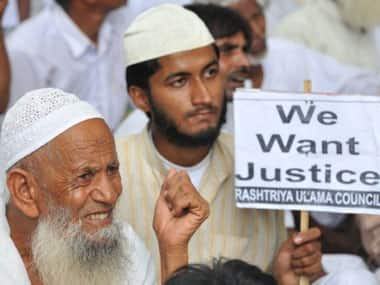By Pallavi Polanki On the morning of 19 September 2008 – one week after the serial blasts in Delhi - gunshots fired in a cramped residential colony, not far from the Jamia Millia Islamia University, left two young boys and a police officer dead. Three years on, the controversial ‘Operation Batla House’ conducted by the Delhi Police refuses to be quietly buried. The dead left behind a trail that raises more questions than answers. And the answers that emerged from dogged RTI queries have only served to confound. Soon after the operation at Batla House, the Delhi Police claimed the recovery of sensational “jihadi literature”. An RTI query, however, yielded only one bit of literature: a collection of fables from the Panchtantra. A surprise, rather unlikely, find at flat number 108 of L-18 apartment in Batla House, the ‘terror-base’ of alleged Indian Mujahideen operatives. According to documents, copies of which are available with Firstpost
‘30 sealed parcels in connection with the case’ were sent to the Central Forensic Science Laboratory (CBI) of the home ministry for a biological examination report by the Delhi Police. The contents – four sealed envelopes, six sealed glass bottles, and 20 sealed cloth parcels – were examined for about one-and-a-half months (10 November to 22 December 2008) by the CFSL lab. [caption id=“attachment_89328” align=“alignleft” width=“380” caption=“The NHRC was directed by the Delhi High Court to conduct an enquiry into the Operation. In its report it exonerated the police of any human rights violation. AFP”]
 [/caption] The examination of the 30 sealed parcels found only one book in all its contents. The CFSL report (dated 22 December and addressed to the ‘Assistant Commissioner of Police, Inter-state cell, Crime Branch, Chanakyapuri, New Delhi”) has this to say: “Parcel 45: One s cloth parcel sealed with the seals of ‘SS’ marked as 45. It contained Exhibit 45. Exhibit 45: One book “Panchatantra”. “As far as I know, Panchatantra does not belong to jihadi literature. Why didn’t the police reveal this rather interesting piece of information,” wonders Afroz Alam Sahil, a student who works for an ‘alternative news portal’ called
beyondheadlines.in
Sahil received a copy of the lab report from the National Human Rights Commission under an RTI query seeking all documents submitted by the Delhi Police to it in connection with Operation Batla House. The bloody aftermath of the shootout is all but evident as one goes through the 47 exhibits contained in the 30 sealed parcels that were sent to the lab. Bloodstained T-shirts, kurtas, bedsheets, and bullets recovered from the bodies, and blood samples from the walls of the apartment make the major part of the remaining exhibits. The NHRC was directed by the Delhi High Court to conduct an enquiry into the Operation. In its report it exonerated the police of any human rights violation. The question of the jihadi literature, however, remains. Sahil, who has opted for Sanskrit as part of language studies in his first year of MPhil at the Centre for Study of Comparative Religion and Civilisation, says he is looking forward to reading the Panchatantra in its original. Perhaps, the Delhi Police should too.
[/caption] The examination of the 30 sealed parcels found only one book in all its contents. The CFSL report (dated 22 December and addressed to the ‘Assistant Commissioner of Police, Inter-state cell, Crime Branch, Chanakyapuri, New Delhi”) has this to say: “Parcel 45: One s cloth parcel sealed with the seals of ‘SS’ marked as 45. It contained Exhibit 45. Exhibit 45: One book “Panchatantra”. “As far as I know, Panchatantra does not belong to jihadi literature. Why didn’t the police reveal this rather interesting piece of information,” wonders Afroz Alam Sahil, a student who works for an ‘alternative news portal’ called
beyondheadlines.in
Sahil received a copy of the lab report from the National Human Rights Commission under an RTI query seeking all documents submitted by the Delhi Police to it in connection with Operation Batla House. The bloody aftermath of the shootout is all but evident as one goes through the 47 exhibits contained in the 30 sealed parcels that were sent to the lab. Bloodstained T-shirts, kurtas, bedsheets, and bullets recovered from the bodies, and blood samples from the walls of the apartment make the major part of the remaining exhibits. The NHRC was directed by the Delhi High Court to conduct an enquiry into the Operation. In its report it exonerated the police of any human rights violation. The question of the jihadi literature, however, remains. Sahil, who has opted for Sanskrit as part of language studies in his first year of MPhil at the Centre for Study of Comparative Religion and Civilisation, says he is looking forward to reading the Panchatantra in its original. Perhaps, the Delhi Police should too.
Batla House jihadi literature had one exhibit: Panchatantra
FP Archives
• September 22, 2011, 09:51:30 IST
The controversial Batla House encounter is supposed to have yielded “jihadi” literature. An RTI query reveals the recovery of only one book - fables from the Panchatantra
Advertisement
)